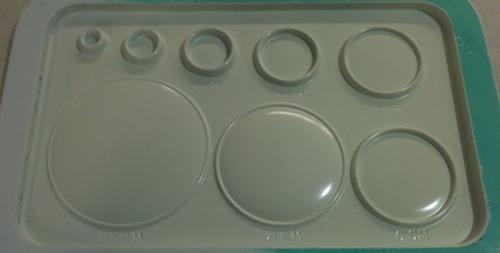
Labour Assessment
last authored: Nov 2010, Kim Colangelo
last reviewed: Dec 2015, Debra Webster
Introduction
Labour consists of regular uterine contractions resulting in cervical change, and normally accompanied by descent of the fetus. These changes are confirmed and monitored during labour by vaginal exam.
The exam can often be unpleasant for the woman, and also increases the risk of maternal and infant infection. As such, vaginal exam should be performed as minimally as possible, usually every two hours, unless there are potentially important changes (i.e. the woman is feeling an urge to push, or the fetal heart rate changes significantly).
The Case of Erin R.
Erin R. is a 27 year old woman who is 36 weeks pregnant comes to the labour and delivery triage with cramping. She is otherwise healthy and the pregnancy has been uncomplicated. She does not report a fluid leak, any per vaginal bleeding and the baby is moving well. The cramping is in the LLQ and RLQ, symmetrical, and will come on every 15-20minutes for an hour, disappear for a few hours and then return. Erin would like to know if she is in labour.
- How will you determine if she is in labour?
Procedure
While preparing for the vaginal exam, explain to the mother what you are doing, and ensure you are chaperoned if you are a male. Prior to performing the exam, wash hands with soap and water or alhocol rinse. Use sterile gloves and lubricant. In many settings, antiseptic such as chlorhexidine is also advised. Use one hand to separate the labia and use the index and middle fingers of the other hand to palpate internally. A vaginal exam of a woman suspected to be in labour consists of the following parts:
- cervix
- membranes
- presenting part
- station
- position
- pelvis
Cervix
The cervix is one of the most important structures to be assessed. Focus on determining dilatation, effacement, consistency, and application.
Dilatation: Opening of the cervix expressed in cm diameter (0cm = no dilation, 10cm = full dilation). Providers will often compare the cervix with their finger width to assess dilatation.
One example is as follows:
- 1 cm: one finger fits tightly inside
- 4 cm: two fingers fit loosely inside
- 8 cm: only two cm remaining on each side around the presenting part
- 10 cm: no cervix is palpable around presenting part.
Repeated practice is critical to gain skill in assessing dilatation, and simple simulators can be fashioned to assist with this. An example is shown in the picture below:

Different health care providers will vary slightly in their assessment of the extent of dilatation, and it is helpful that the same provider perform ongoing assessment for consistency.
Effacement: Thinning of the cervix caused by pressure from the fetus’ head. It is expressed either as a percent (0% = no effacement, 100% = complete thinning) or by length (2cm, 1cm, 0cm). Again, there can be some variability between assessments done by health care providers, especially if using percentages, and repeated practice is necessary to become skilled in this assessment.
Consistency: The cervix softens with increasing effacement and becomes thin and stretchy.
Application: The amount of contact between the cervix and the presenting part; good application is ideal to prevent a cord prolapse.
Membranes
Are the membranes ruptured or intact? If ruptured, determine the amniotic fluid color to determine if meconium is present. If there is a question, there are various ways of confirming this (see here).
Examples of fluid:
- clear: pale yellow
- meconium: yellow, brown, or green fluid that may be thick or thin
- bloody: blood present
Presenting Part
While presentation has ideally been determined beforehand by modified Leopold's maneuvers, the vaginal exam is also very important. Determine if the fetus is cephalic or breech by feeling for:
- head (occiput; round, hard, and smooth)
- buttocks (sacrum; soft, with some bony areas)
- chin or face (mentum)
- foot
- shoulder
An obstetric emergency is the palpation of the umbilical cord as the presenting part – a cord prolapse (main article).
Station
Station is the location of the presenting part in relation to the ischial spines, and describes descent of the fetus. It is denoted as follows:

Image: Labour assessment station – Kim Colangelo, 2010
Position
If the presenting part is occiput, attempt to determine the direction it is facing by palpating the fontanelles. Begin by feeling for the saggital suture, present in the midline. The anterior fontanelle is diamond shaped, and may be felt as four sutures coming together. The triangular posterior fontanelle, on the other hand, is the union of three suture lines. The direction is denoted as OA if the occiput of the fetus is anterior in relation to the maternal pelvis, OT if transverse, and OP if posterior.
Assessment of the Pelvis
While no longer done or recommended as a component of routine care, clinical pelvimetry may be used to assess the size of the bony pelvis and provide general information about feasibility of birth.
Measure diagonally from the sacral promontory to the point of the symphysis that is most exterior; this should be greater than 11.5 cm. The ischial spines should also be palpated; if they are very prominent, delivery can be more difficult.
Resources and References
How to tell when labour begins. The American Congress of Obstetricians and Gynecologists. Feb 2009.
Pelvic Exam During Labour – Brookside Press
